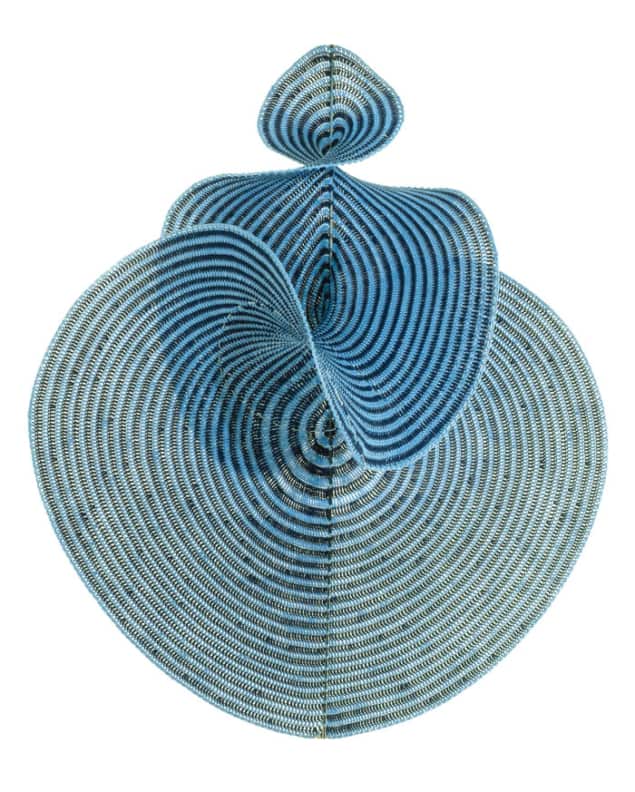Physicists should learn from the mathematics community’s annual Bridges conferences, says Robert P Crease

Mathematicians from around the world will be converging on the Korean capital of Seoul next month to attend the largest international conference in the mathematical community. Held every four years, the International Congress of Mathematicians (ICM) attracts several thousand participants. One highlight is the announcement of the Fields medal, which is regarded as the highest award a mathematician can achieve and is dubbed (along with the Abel Prize) the “mathematician’s Nobel”.
But elsewhere in Seoul, another event will be unfolding at the same time, called Bridges: Mathematical Connections in Art, Music, and Science. Held annually, the Bridges conferences are much smaller than the ICM but are far more diverse, with participants crossing from maths into sculpture, painting, weaving, tiling, theatre, music and even dance. In a shrewd move to boost public attention, the ICM’s planners have invited the Bridges conference to be a satellite event to their own. Much of what mathematicians do is not usually that comprehensible to the public, and Bridges will provide good “eye candy” for the media.
Beyond the script
The driving force behind Bridges is Reza Sarhangi, a mathematics professor at Towson University in Maryland. Originally from Iran, he worked as a drama teacher, playwright and set designer in the 1980s while studying mathematics at Pars University in Tehran. During the 1990s, after Sarhangi became a mathematics professor at Southwestern College in Kansas, he attended small gatherings of people exploring connections between mathematics and art.
Bubbly, energetic and visionary, Sarhangi saw more potential in the gatherings than their initiators did. He therefore created a non-profit corporation to manage the conferences, gave them academic respectability by publishing printed proceedings, and established an active board of directors. In 1998 he staged the first of a series of larger and more ambitious meetings at Southwestern, and organized subsequent events at places of interest to mathematicians and artists, such as the University of Granada in Spain, the Banff Centre in Canada, London’s Institute of Education, and Leeuwarden in the Netherlands (the birthplace of M C Escher). The Bridges meetings are now the conferences on mathematics and art.
Sarhangi’s background in theatre is essential to the success of the Bridges conferences. “Theatre involves making connections with the audience that go beyond just the script,” he says. “So at Bridges, I – and the other three board members – want the conference attendees to get more than just the content of the papers, but to have an enjoyable experience that integrates art, dance, and other performances.” To encourage speakers to improvise their talks, he publishes the proceedings in advance of the conference.
This year’s Bridges conference is being held at the relatively new Gwacheon National Science Museum, the largest science museum in Asia. Special events include evenings devoted to music, theatre and film; a giant Zometool ball-and-stick construction; and dance and mime performances. George Hart – a colleague of mine at Stony Brook University – plans to stage one of his signature “barnraisings” – a large mathematical sculpture to be put together by a community of participants, at Seoul’s Mathlove Museum, one of the world’s few museums devoted to mathematics.
Featured speakers at Bridges, too, have crossover appeal. These include the US computer scientist Alan Kay, a Turing Award winner and a creator of the modern computer; the French mathematician Cédric Villani, a Fields medallist and director of the Henri Poincaré Institute, whose flamboyant dress and demeanour earned him the nickname “the Lady Gaga of mathematics”; the artist and mathematician Thomas Banchoff, whom Salvador Dalí once consulted about the fourth dimension; and Hinke Osinga and Bernd Krauskopf, a wife-and-husband team now in the Department of Mathematics at the University of Auckland, whose work includes a crochet version of Lorenz’s equations describing the behaviour of chaotic systems.
Other talks concern quilting, the physics of tops, 4D geometry, the architecture of mosques, the mathematics of juggling and torus-knot carbon nanotubes – structures made of beads that could also be made of carbon atoms. One speaker will also unveil the first ever sculpture whose symmetry is the same as that of a “quaternion group”.
The critical point
To me the Bridges events are fascinating. But why can physics not do something similar? After all, its bridges with artistic and other creative disciplines already exist. As Hart puts it, by creating bridges to painting, sculpture, poetry and dance, mathematicians can reach out to non-mathematicians who do not understand the creative and artistic side of the subject. In fact, the traffic on those bridges, he says, goes both ways. “Ideas from mathematics get visualized or inspire artists, while in the other direction the desire to create or engineer an art work brings up math problems.”
What is more, the Bridges conferences have given birth to their own community, mainly of people in mathematics departments with artistic interests who attend the conferences to see what others are working on. The Bridges community has also spawned a spin-off of smaller events that begin this autumn called MoSAIC: Mathematics of Science, Art, Industry, and Culture. A joint project with Berkeley’s Mathematical Sciences Research Institute, it consists of a series of mathematics–art festivals and will bring the Bridges spirit to a larger audience over the next academic year.
The first will be held at Berkeley in October, with subsequent festivals at Columbia University in New York, the University of Illinois at Urbana-Champaign, and at Portland, Boulder and Towson. An art exhibition will be shipped from each festival to the next, and involve local presenters and an audience that might not attend the annual Bridges conference. It is surely possible for physicists to follow the lead of the mathematicians – after all, it is only a question of seeing the value in widening and cementing the bridges between our field and art.


